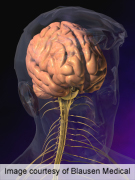
WEDNESDAY, March 21 (HealthDay News) — Alzheimer’s disease and other types of dementia appear to spread through linked nerve cells in the brain, new research indicates.
The findings from MRI brain scans of dementia patients suggest that it may be possible to use MRI to predict the progression of dementias and to monitor the impact of treatments, the University of California, San Francisco (UCSF) researchers said.
They found that Alzheimer’s disease and four other common types of dementia appear to move between connected neurons in similar ways, even though they affect different brain networks.
The study appears in the March 22 issue of the journal Neuron.
“Our next goal is to further develop methods to predict disease progression, using these models to create a template for how disease will progress in the brain of an affected individual,” study co-leader and neurologist Dr. William Seeley said in a UCSF news release.
“Already this work suggests that if we know the wiring diagram in a healthy brain, we can predict where the disease is going to go next. Once we can predict how the network will change over time, we can predict how the patient’s behavior will change over time and we can monitor whether a potential therapy is working,” he noted.
In another study published in the same issue of Neuron, a Cornell University team also used MRI to examine brain networks affected by dementia and reported results similar to the UCSF researchers’ findings.
More information
The U.S. National Institute on Aging has more about Alzheimer’s disease.

